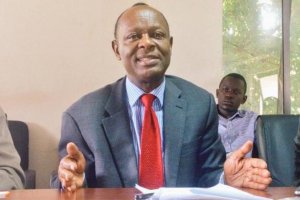Blah blah blah… that is how the Chairperson opens most meetings where they talk and talk and talk, without significant impact on solving the most pressing issues that caused the meeting in the first place.
Meetings take a long time because everyone wants to say something and in the process, lots of noise and less value. Some leaders want to call people for a meeting to just give them instructions. In these kinds of meetings, people are likely to sleep off. For real, I have attended meetings where the brain evaluated the options available – sleep or continue listening and recommended sleeping because the meeting was adding no value! Many meetings are more of forums to issue instructions or to brag or just to show who is the boss. Yet, people do not like to be instructed or any of those things. People want to be challenged to think. To explore and reason. To think aloud. Great meetings are where people are given challenges and asked to find solutions on their own.
Traditional agendas, behaviours, and practices for meetings make them unproductive. You have an agenda like; i) communication from the Chairperson, ii) review of the previous minutes, iii) reports from departments, (iv) CEO report and (iv) Any Other Business (AOB). This kind of meeting agenda invites people to relive history – the meeting time is spent poorly with over 80% of the available time on things members should already know or should have come to the meeting having read. After all, the purpose of meeting papers is to give members invited to attend the meeting some context and perspectives so that they make informed additions. Any good board Chairperson must pick fights with members who ask questions already addressed in the prior reading materials. You can not lead an organization effectively if you spend time with your critical team on issues of the past. This is why every leader is encouraged to appreciate the modern agenda for meetings, which at Summit Consulting Ltd, we call the future-ready meeting. Going forward, all your meeting agenda’s should be thus:
i) Opening prayer. Start the meeting with a prayer. (This item is optional – depends on the cultural, religious and societal orientation of the organisation. Religious founded Institutions should consider having it as it aligns with their beliefs and value systems). We encourage that it aligns with the company values. If integrity and community, are such values, why not demonstrate it with agenda item #2, conflict of interest declaration? Remember to live your values by action not just statements. And don’t forget to tell people the why of each agenda item. It is just good leadership.
ii) Conflict of interest declaration to open up people’s minds to explain if they are conflicted or not.
iii) Key meeting outcomes by the Chairperson. The Chairperson states the key meeting outcomes – what should be achieved or what decision should be reached by the end of the meeting. This directs the conversation and discussion of the meeting. For example, “by the end of this meeting, we need to have decided whether to invest in Uganda or not and if yes, which industry and how much money to commit in the first five years?”
iv) Questions to the CEO or Chairperson. Give room for people to ask questions to the Chair—who most times is the CEO. It is tough in the beginning, but it lets people get answers to their pressing Now, this is for confident and secure leaders. It works great. You could consider having the secretary receive questions in confidence or direct in advance of the meeting to help prepare informed responses.
v) Review the status of the decisions passed or instructions made or key matters considered at the previous meeting. You review matters of the previous meeting to know the status – did it work or not, and why. This helps follow up strategically, understand the status of the action points to keep all on one page and most critical know what has been done, pending and the resources needed, if any, to close the action point.
vi) Scorecard review and focus areas. As a business, you have identified mission-critical areas which are part of your scorecard. Let the people who are responsible for the scorecard areas give the status to understand whether the business is winning, losing or stagnating. That way, you pick the lessons learned and progress going forward. You want people to share their status updates in advance so that at the meeting focus is on how to finetune and win. What to change or new ideas to disrupt the industry and win. That way the meeting is productive.
vii) Innovation – where you allow team members to understand what the challenges are and how best they can be solved in novel ways. This keeps the team aware of the current challenges.
This type of agenda shortens the time taken for the meeting. It allows team members to think and add value.
Remember, good corporate governance recommends that you don’t provide for any other business. This is a business meeting, not a leisure meeting. Focus on issues that you have prepared for only.
Want to transform your meetings, contact Summit Consulting Ltd. We will work with your executive team to unlearn old habits and become future-ready. Winning is a result of small changes applied consistently. It is not about spending big. No.
The future-ready agenda is:
1) Opening prayer (demonstrates our values)
2) Conflict of interest declaration (demonstrates our value of transparency)
3) Key meeting outcomes by the Chairperson (informational, see paper 1/2022).
4) Questions to the CEO or Chairperson (instead of comments on the Chairman’s remarks which is plain – let people ask questions and get answers for the top honcho. It encourages the Chair or CEO to prepare and account for decisions at the peer level).
5) Review of previous meeting decisions/instructions (update).
6) Scorecard review and focus areas (update).
7) Five innovation minutes (new ways to win).
Use the above agenda to run productive meetings, full of conflict and you will slowly see growth and value addition. Never again waste company time on boring meetings. For more insights on practical leadership transformation, give us a shout.
Copyright Mustapha B Mugisa, Mr Strategy 2022. All rights reserved



